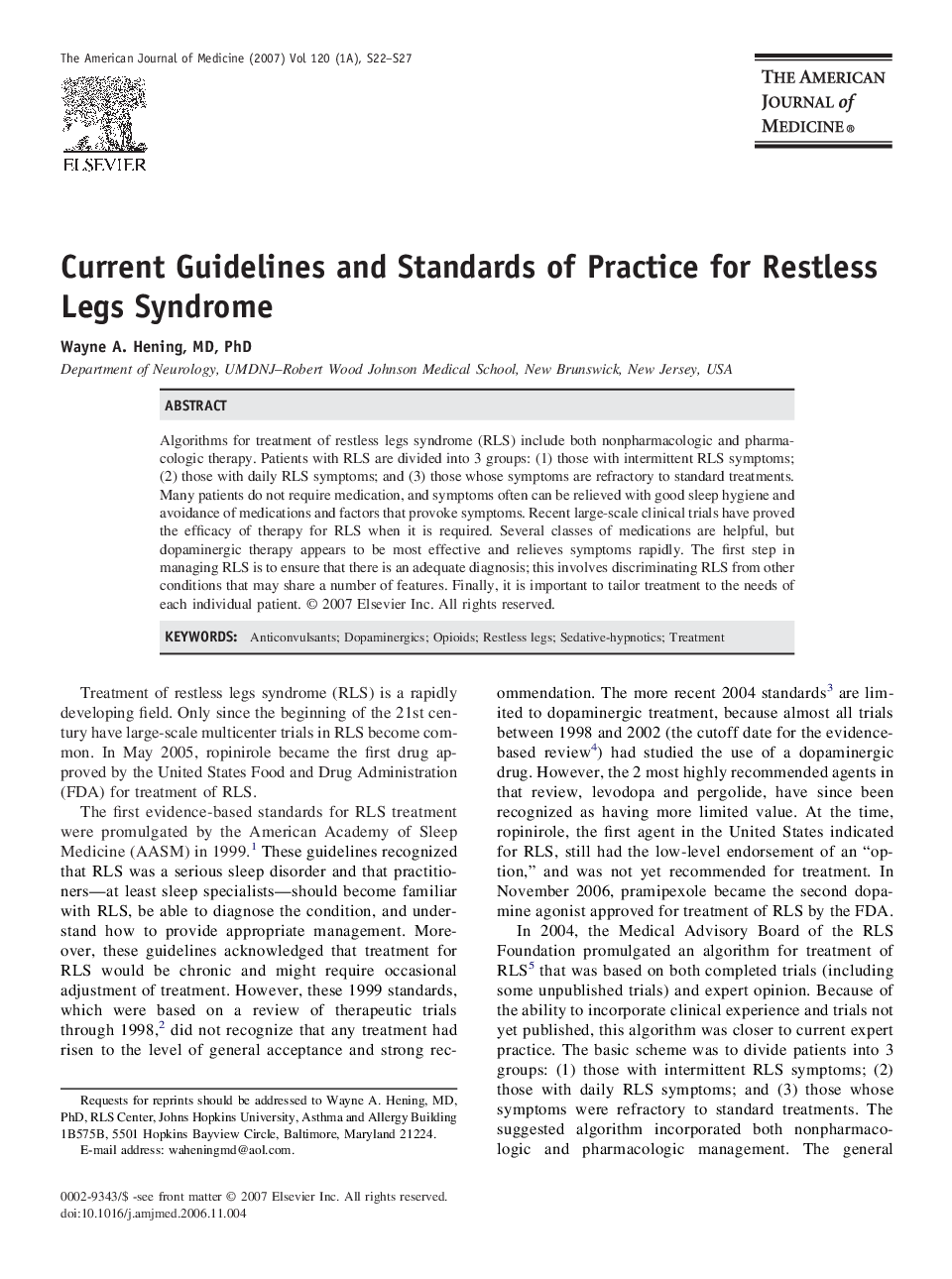| Article ID | Journal | Published Year | Pages | File Type |
|---|---|---|---|---|
| 2721265 | The American Journal of Medicine | 2007 | 6 Pages |
Algorithms for treatment of restless legs syndrome (RLS) include both nonpharmacologic and pharmacologic therapy. Patients with RLS are divided into 3 groups: (1) those with intermittent RLS symptoms; (2) those with daily RLS symptoms; and (3) those whose symptoms are refractory to standard treatments. Many patients do not require medication, and symptoms often can be relieved with good sleep hygiene and avoidance of medications and factors that provoke symptoms. Recent large-scale clinical trials have proved the efficacy of therapy for RLS when it is required. Several classes of medications are helpful, but dopaminergic therapy appears to be most effective and relieves symptoms rapidly. The first step in managing RLS is to ensure that there is an adequate diagnosis; this involves discriminating RLS from other conditions that may share a number of features. Finally, it is important to tailor treatment to the needs of each individual patient.
